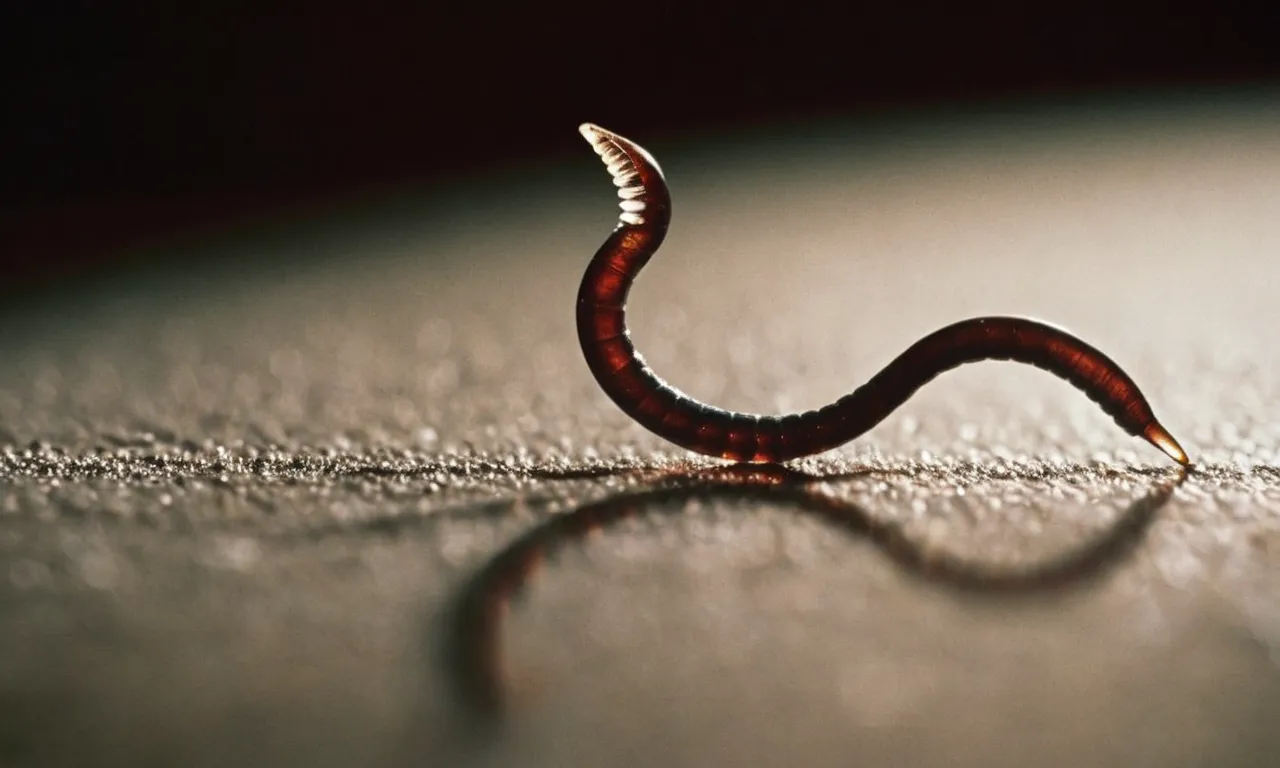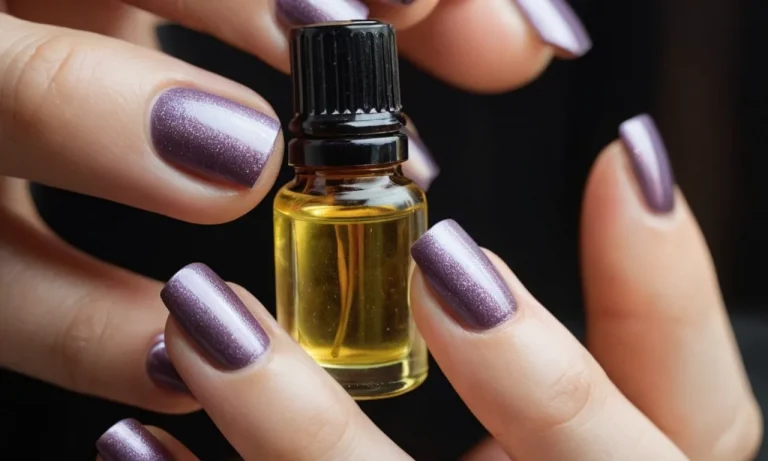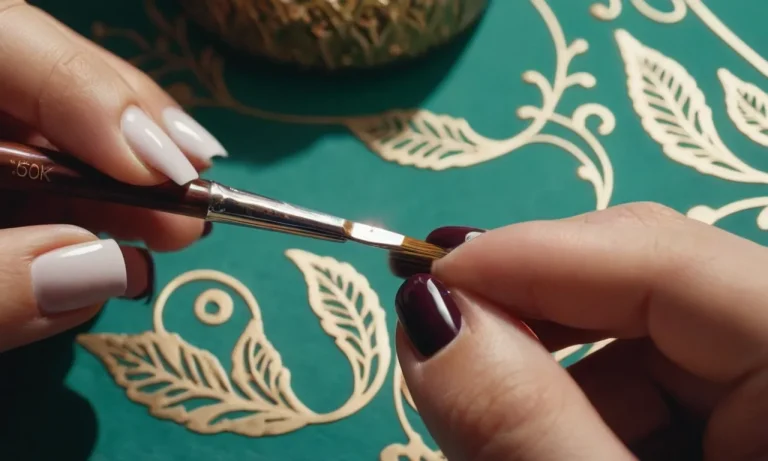Can Biting Your Nails Give You Worms?
Nail biting is an incredibly common habit, but it comes with risks like infection. If you’ve ever bitten your nails, you may have wondered – can I get worms from biting my nails? The quick answer is no, you cannot get parasitic worms like tapeworms, roundworms, or hookworms directly from biting your nails or cuticles.
However, nail biting can increase your risks of getting bacterial or viral infections. When we dig into the details below, you’ll understand exactly why and how much you should worry about infections from your nail biting habit.
Why There’s Confusion About Nail Biting and Worms
Misconceptions About Parasitic Worm Transmission
There’s a common myth that biting your nails can give you worms. This idea has been around for decades, leaving many nervous nail biters worried. But is there any truth to this claim?
Parasitic worms are internal parasites that live in the intestines and other organs of humans and animals. There are several different types of worms, including roundworms, tapeworms, pinworms, hookworms and whipworms.
While an infection of parasitic worms is called helminthiasis, it’s commonly referred to as just “having worms.”
Parasitic worms are spread through contaminated food or water, contact with infected feces, or transmission from mother to baby during pregnancy or breastfeeding. Worm eggs and larvae can enter the body through the mouth or skin.
However, there is no evidence that you can get worms simply from biting your nails or fingers.
So where does this nail biting myth come from? There are a few potential sources of confusion:
- Children are prone to both nail biting and worms, so people connected the two.
- Nail biting can spread germs and bacteria, so people assumed it could also spread worms.
- Parasitic worm eggs have been found under nails, leading to theories they could be transmitted by nail biting. But the eggs got there by the person touching contaminated surfaces, not from biting.
While biting nails is unsanitary and can transmit bacteria and viruses, rest assured it cannot lead to parasitic worm infections.
How Bacterial and Viral Infections Happen
Nail biting is linked to higher risks of certain bacterial and viral infections. When you bite your nails, you risk introducing germs, viruses and bacteria into your body. Frequent nail biters are more prone to infections like:
- Common cold and flu – Viruses get into the body through the eyes, mouth and nose.
- Strep throat – Oral bacteria can be transferred from fingers.
- Gastrointestinal infections – Introducing fecal bacteria orally can lead to stomach bugs.
- Paronychia – Inflammation and infection of tissues around the nails, caused by bacteria.
A 2006 study found that 45% of teens who bit their nails tested positive for enteric bacteria in their saliva, compared to 25% of non-nail-biters. Paronychia is also widely reported among nail biters. One study showed almost 30% of chronic nail biters had a current or past paronychia infection.
The most common route of bacterial transmission is through the mouth. When you bite your nails, you risk transferring bacteria from your nails and fingers into the mouth. Proper hand washing is key to help reduce bacteria levels before biting nails or touching the face and mouth.
So while nail biting does not lead to parasitic worms, it does increase the risk of regular bacterial and viral infections. Breaking the habit can improve your overall health.
Understanding Different Types of Worms and Parasites
Differences Between Parasitic Worms and Germs
Parasitic worms and germs are both tiny organisms that can cause infection and disease, but there are some key differences between them. Germs like bacteria and viruses are microscopic and spread through contact with contaminated surfaces, fluids, or inhaling airborne particles.
Parasitic worms like tapeworms, pinworms, and roundworms are larger, multicellular organisms that live in a host organism and feed off it.
While germs replicate on their own, parasitic worms need a host to reproduce and spread. Germs make you sick by releasing toxins or damaging cells. Parasitic worms harm the body more mechanically by consuming nutrients, damaging tissues, or triggering immune responses as the body tries to expel the invader.
So while both can cause issues, the mechanisms differ.
Common Parasitic Worms That Infect Humans
Some worms more commonly infect humans globally. These include:
- Roundworms – One of the most widespread worms, infecting almost 25% of the world population. They are transmitted through contaminated soil and water and live in the intestines.
- Pinworms – Extremely contagious intestinal worms spread through contamination. They infect about 209 million people worldwide.
- Hookworms – Found in tropical and subtropical regions, hookworms enter through the skin and migrate to the intestines. Around 576 million people are infected.
- Threadworms – Also called strongyloides, these worms enter skin and travel to the gut. They infect up to 100 million people globally.
- Tapeworms – Can grow very long inside the intestines. People may ingest tapeworm eggs from contaminated food or surfaces.
How Parasitic Worms Actually Spread
Parasitic worms infect humans in a few key ways:
- Fecal-oral route – Worm eggs or larvae in feces from an infected person contaminate food, water, soil, or surfaces. Someone else ingests the parasite and gets infected.
- Through the skin – Hookworms and threadworms enter the skin directly, often through the feet when walking barefoot.
- Eating raw or undercooked meat/seafood – Tapeworms transmitted this way. Freezing or cooking meats kills parasites.
- Mosquito bites – In tropical areas, mosquitoes transmit worm larvae.
- Mother to unborn baby – Some worms can pass to a developing fetus in utero.
Proper hygiene like handwashing, sanitation, and thoroughly cooking meats can prevent worm transmission. Wearing shoes in endemic areas also limits skin contact. Understanding how different worms infect allows travelers and those in affected regions take suitable precautions.
Risks of Infection From Nail Biting
Dangers of Opening Wounds with Nails and Teeth
When you bite your nails down too far or tear the skin around your nails with your teeth, you create openings where bacteria and viruses can enter your body (UCSF Health, 2022). These wounds make it easier to develop infections in your fingers or hands that could require medical treatment with antibiotics or other therapies.
Nail biting that breaks the skin is essentially giving germs a free pass into your body. And once bacteria get beneath the outer protective layer of skin, your risk for developing painful abscesses, inflammation, or even sepsis goes up exponentially (KidsHealth, 2019).
Increased Risk of Spreading Infections to Your Body
Beyond the infections resulting directly from skin wounds, nail biting also raises your overall risk of ingesting and spreading infections internally. When you bite your nails, you inevitably transfer germs, viruses, bacteria, or even parasites from your fingers into your mouth and digestive tract (CDC, 2022).
From there, these pathogens have an easy pathway to infect your throat, lungs, or other organs. KidsHealth cited several illnesses, like pinworm infections, hepatitis A, and influenza, that children can directly contract from the habit of biting nails (KidsHealth, 2019).
For anyone with a weakened immune system, the results of spreading these diseases internally could be quite severe.
Specific Health Conditions Linked to Nail Biting
Medical experts have connected the habit of nail biting to increased prevalence of multiple health conditions:
- Skin infections on hands and fingers (UCSF Health, 2022)
- Gingivitis and other dental problems (Colgate, 2022)
- Higher risk of contracting gastrointestinal illnesses (CDC, 2022)
- Greater likelihood of respiratory infections like pneumonia or bronchitis (KidsHealth, 2019)
The CDC also warned that the microorganisms living beneath nail beds could potentially expose biters over time to toxoplasmosis, herpes, hepatitis B, and other infectious diseases (CDC, 2022).
| Disease | Infection Rate Among Nail Biters | General Population Infection Rate |
|---|---|---|
| Gingivitis | 23% Higher | 10-15% of Adults |
| Pinworm Infections | 14% Higher Incidence | 4-28% of Children |
As the table above displays, medical research has shown significantly greater incidence of certain communicable illnesses among those who frequently bite their nails (Colgate, 2022). By removing that route of disease transmission, individuals could meaningfully reduce their infection exposure.
Preventing Illness When You Bite Your Nails
Keep Your Hands and Nails Clean
Keeping your hands and nails clean is crucial to avoid ingesting germs when you bite your nails. Here are some tips:
- Wash your hands frequently with warm water and soap, especially before eating and after using the bathroom.
- Scrub under your nails gently with a nail brush while washing.
- Use hand sanitizer when soap and water are not available.
- Consider carrying disposable wipes or a small bottle of hand sanitizer with you.
- Avoid biting your nails after touching dirty or contaminated surfaces.
Use a Nail File Instead of Teeth
Replacing your teeth with a nail file helps minimize the spread of germs when you feel the urge to bite your nails. Here’s how:
- Keep an emery board, glass file, or other type of nail file with you.
- When you feel like biting your nails, file them gently instead.
- Focus on filing rough edges that may tempt you to bite rather than aggressively shortening your nails.
- Consider carrying a small nail file in your pocket, bag, or car.
- Buy several nail files and keep them in places where you frequently bite your nails, like at your desk or on the couch.
Get Treatment for Chronic Nail Biting
If you compulsively bite your nails and have difficulty stopping, talk to your doctor or a counselor about treatment options. Some strategies that may help include:
- Cognitive behavioral therapy to identify triggers and develop alternative coping strategies.
- Prescription medications to curb compulsive urges, such as selective serotonin reuptake inhibitors.
- Barrier methods like bandages, gloves, or foul-tasting polishes to make nail biting physically difficult.
- Hypnosis or meditation to reduce stress and anxiety that contributes to the habit.
- Support groups to help encourage accountability and provide coping techniques.
Chronic nail biting takes time and effort to overcome. But with diligence and treatment, you can break the habit and reduce your risk of illness. Some tips like carrying a file or hand sanitizer can be helpful quick fixes on the path towards change.
👍 With practice, your nails will gradually grow healthier and you can feel confident putting your hands near your mouth without fear of germs! 😊
Conclusion
While biting your nails won’t directly give you parasitic worms, it does significantly increase your odds of developing other types of bacterial and viral infections. Stopping chronic nail biting through tools like gloves or bandages can help reduce your risks.
If you currently have symptoms like infection around your nails, be sure to see your doctor for proper diagnosis and care.
Understanding exactly how infections are transmitted will help you avoid misconceptions. You now know why sources referencing nail biting and worms may be misleading – worm transmission relies on eggs and larvae, not simply exposure to pathogens.
While biting nails comes with many risks, parasitic worms can be excluded from the list with the information you now have.







